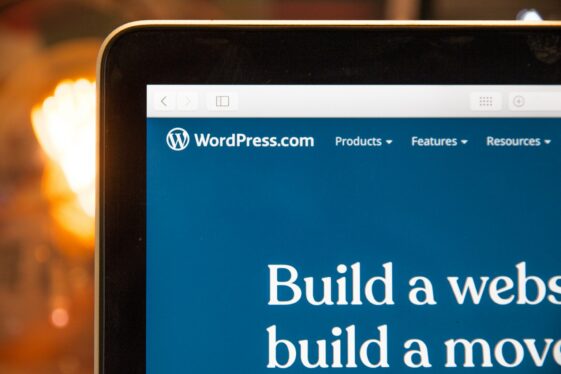Your Guide to Using Multisite Over Single Sites

Your Guide to Using Multisite Over Single Sites
Bundling multiple websites into one network isn’t a new concept. First, let’s define what it actually is. A Multisite is a Content Management System (CMS) powered feature that allows organizations to create a “network” of sub-sites within a single instance of a CMS. This network shares a file system, database, and variations of the same domain such as example-company.com, example-company.com/microsite1, microsite1.example-company.com and much more. This setup can be two websites, or thousands running on the same network and platform.
In general, multisites implementations are good for:
- Associations who manage multiple domains such as a primary website, conference, events, advocacy groups, and education marketing based websites.
- Universities that operate a primary website and are responsible for brand-consistent department and school websites that have their own domain.
- Non-profit organizations that run advocacy, fundraising, and event-based microsites.
- Larger corporations that have unique business units, franchises, affiliates, or products that need their own websites and are constantly running demand generation marketing campaigns.
Having a multisite setup is an excellent, timesaving feature and a powerful digital strategy for most mid-to-larger organizations. For others, it might not be the right approach. Let’s explore the advantages and disadvantages.
Please note: Although there are several great CMSes such as Drupal 9, that have networking functionality, for this guide, we will focus on the powerful, flexible and popular WordPress Multisite which most marketing managers love.
Multisites are Ideal for Shared Database Use
If you manage an organization that has sister sites, conference sites, or dozens of microsites, WordPress Multisite may be a saving grace. By migrating your primary website domain (example.com) to a Multisite CMS, you can set up new subsites quickly that are consistent and pre-configured with all branding in place.
Already, there are many associations, financial institutions with nationwide representation, and universities that rely on streamlining their web technologies. Network-enabled platforms provide the framework these entities need to deliver a comprehensive brand experience to their targeted demographics. For example, a university may install a platform-powered network and be fully in charge of the primary university.edu domain, while still having full control of all their department websites under that platform.
The university super web administrator can create school department-based microsites off the multi-site platform for brand consistency, while providing other content managers the power to manage all content and media for a specific domain, and without having to worry about security updates or visual inconsistencies.
Advantages of the Multisite Approach
As the super admin, you can manage a large number of websites from one dashboard. Going back to the university example, consider that the parent domain identifies the university, while the other websites represent different university programs and/or schools. Because brand consistency is of significant importance, this level of structured control is ideal.
You, as the super administrator, remain in full control of the brand’s look and feel. At the same time, your department content managers can make tweaks to appeal to the student user base and fully control content and media 24/7 from any device.
Additionally, should the school have an important announcement, the super administrator can release this announcement across all department websites within seconds. The super administrator can also release important security patches and platform updates across all department websites without any downtime or delays.
Additional time-saving advantages include:
- The ability to create sub-domains that function as individual websites or microsites.
- The freedom to build subdirectories that elaborate on the advantages of local presence for your corporate brand. For example: banks may have local branches that need their own microsite to serve a local audience.
- The functionality to update multiple sites at once, rather than sending out site change requests that may take a while to put into action.
- The capacity to enable website administrators to create a website that gives them the freedom to use the vetted plugins they like, while maintaining overall content and brand consistency.
- The facility to post graphics, blogs, tutorials, or sales messages to all sites nearly instantly, which is a must when you are a retailer and change promotions frequently.
- The ability to evolve your web presence w/ improved plugins and features that continue to enhance your brand.
Disadvantages of the Multisite Setup
WordPress Multisite is a well-designed platform, but it’s not for every organization. There are some serious technical considerations to understand before deploying.
There are considerations based on mutlisite’s design alone. For example, if the administrator or hosting provider fails, the primary domain might go down. When it does, every subdirectory or subdomain connected to it will go down, too. The same can be true for cyber attacks. If one site gets compromised, you may find that the whole network could become affected. That’s why it’s also important to work with a web agency that specializes not only in WordPress network implementations, but also focuses on building layered security and performance solutions.
The biggest challenge to consider w/ embedding sub-brands under a multisite is in regards to migrating that content out into its own site, eventually.
Right now, WordPress Multisite doesn’t have a quick process established for this part of the development lifecycle, and there is still a fair amount of manual migration involved to properly separate out an entity on its own. That is the main downside to consider long-term w/ this kind of site structure being deployed.
Cost can also be a challenge for smaller organizations. Implementing a robust WordPress multisite CMS is more expensive than a regular single WordPress installation. It takes more effort to design templates, components and a design system that can serve two or thousands of microsites. This adds more time to the discovery, design and development process.
The Power of Subdirectories Versus Subdomains
Your SEO opportunities will vary based on how you set up your WordPress Multisite domain structure.
With WordPress’s Multisite implementation strategy, you have choices. You might opt for the development of various subdirectories, or as subdomains. A subdirectory-based setup might look like this: example-company.com/SubDirectory1. The upside with this setup is that you won’t have to pay too much attention on cultivating links for a variety of domains. On the downside, however, it won’t let you customize certain elements, like the site name to capitalize on a hot local SEO term, etc..
The search engines will see your multisite setup as one single website. If the primary domain is set up correctly, then subdirectories can work well. SEO is easier to manage under this setup, especially if you have a limited staff managing your organization’s IT needs.
A subdomain multisite setup might look like this: SubDomain1.example-company.com. With this new URL structure in place, the SEO focus is on the subdomain, but your main domain also comes into play.
Another factor with subdomain setup is having to organize content properly to develop domain authority for each subdomain. You should opt for this overall setup if you have the marketing team support to make it happen. Sister sites, affiliate, or chapter sites, who are expected to do their own advertising and drive traffic, prefer this setup.
When running all your microsites, department, or sister websites off one domain, it has strong SEO opportunities. It allows search engines to crawl one domain and index all content. The more relevant content a website has, the better it is for search engine rankings. It makes getting inbound links easier; lets you capitalize on your social media traffic to one domain, and gets more users involved across a variety of sites on the same domain.
When You Already Have an Existing Domain: Think before You Leap
What happens if you already have begun the process of amassing separate domains or building subdomains to a main one? Do you want to keep this structure intact? If you plan to transition to something like WordPress multisite, rather than start out there, you have the opportunity to make structural changes.
Before making this decision, check your site keyword rankings and gauge them against the traffic your sites or domains currently receive. By providing ample messaging to your users in advance, in conjunction with standard site migration backend practices, you will be able to anticipate changes to the traffic, and plan your move and subsequent recapture of traffic accordingly.
Of course, if the right approach is to consolidate all sites into a multisite network, and sunset older domains, then we recommend a URL redirect strategy to make sure SEO value is not lost during this transition. During the implementation process, we collect existing URLs for each domain and ensure the right redirects are in place for every single domain that will no longer be in use. This gets users to the right new place, and it properly informs search engines of how to update its index with new site URLs.
How Multisite Could Be What Your Company Needs Right Now
Having to focus only on the main domain lets you streamline your site update process. This domain then functions as a platform that lets you manage two — or thousands — of sites. Your unique touch will remain in effect through the use of plugins and themes that affect the entire network of sites.
If your marketing team has limited resources and several websites to manage, multisite management can make website management much easier with tools like a single, unified dashboard that frees you up to focus on your marketing initiatives. Besides that, it allows you to create landing pages and microsites extremely quickly and affordably.
What’s in It for You When Opting for Multisite w/ Gutenberg
This deep dive into the Multisite WordPress functionality can be a lot to take in. If you are still not sure, the below summary may help further.
- Multisite easily helps maintain brand consistency. As you add new microsites, conferences, events, or advocacy websites, you can easily deploy new websites quickly and affordably while staying on brand. With a brand consistent design system and templates, new pages, subsites etc will follow a brand consistent deployment process.
- Multisite makes content consistency easy. If your online presence is a patchwork of inconsistent user interactions with your brand story, it gets confusing. While individual site admins do the best they can, there is no consensus of what this should look like. With the right content strategy and content governance, your network of sites can become consistent.
- Multisite is team-focused: Your brand story grows and changes for each subsite or microsite. It evolves. You, as the content manager for the subsite or microsite, don’t have to rely on local admins to implement adjustments whenever you decide to do so. You have as much control over your content as the super administrator.
- Multisite provides backend consistency. All templates, plugins, integrations, and so on are created equal and consistent across all websites run off the network.
- Multisite makes managing security easier. For most organizations, security is the most important factor. When you run multiple sites on one platform, a security patch can be released across all websites instantly rather than update one site at the time.
We’d love to talk to you about moving your site to WordPress, changing it to a network setup, or, conversely, breaking it up into separate sites. Connect with us today to learn more about your options!



